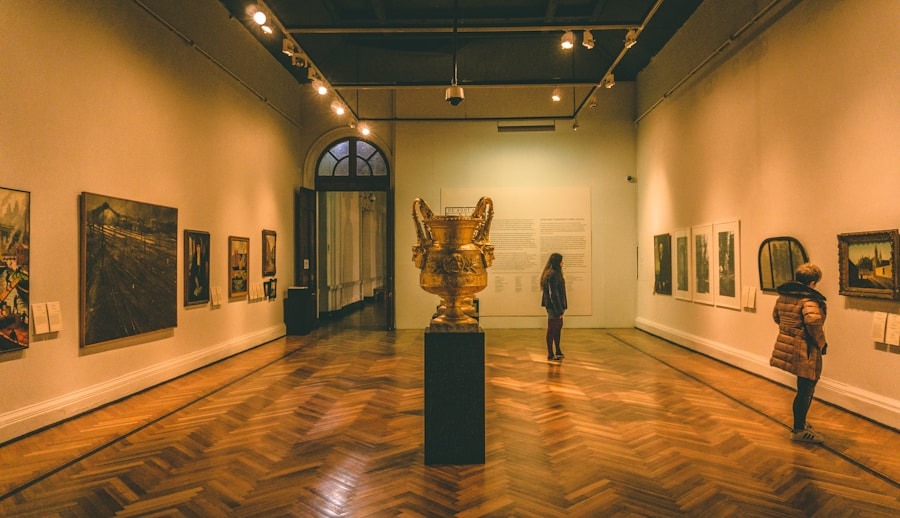Ethical principles in museum practices serve as the foundation for how institutions engage with their collections, audiences, and the communities they represent. Museums are not merely repositories of artifacts; they are dynamic spaces that shape cultural narratives and influence public understanding of history and identity. The ethical framework guiding these institutions is crucial, as it dictates how they acquire, conserve, interpret, and display cultural heritage.
This framework is informed by a variety of factors, including legal standards, professional codes of conduct, and societal expectations. As museums navigate the complexities of their roles, they must balance the preservation of cultural heritage with the need to respect the rights and voices of the communities from which these artifacts originate. The ethical principles that govern museum practices encompass a wide range of considerations, from the stewardship of collections to the representation of diverse narratives.
These principles are not static; they evolve in response to changing societal values and the growing recognition of the importance of inclusivity and representation. For instance, the increasing awareness of colonial histories has prompted museums to reevaluate their practices regarding the acquisition and display of artifacts obtained through colonial means. This shift highlights the need for museums to engage in ongoing dialogue with stakeholders, including indigenous communities and marginalized groups, to ensure that their practices align with contemporary ethical standards.
Key Takeaways
- Ethical principles are essential in guiding museum practices and decision-making, ensuring the preservation and presentation of cultural heritage in a responsible and respectful manner.
- Museums play a crucial role in preserving and presenting cultural heritage, serving as custodians of artifacts and providing educational opportunities for the public.
- Ethical considerations in acquiring and displaying artifacts involve respecting the rights and cultural sensitivities of communities, as well as ensuring transparency and accountability in the acquisition process.
- Repatriation is a key ethical responsibility of museums, requiring careful consideration of the rightful ownership and cultural significance of artifacts, and the establishment of respectful partnerships with source communities.
- Ethical guidelines for interpreting and presenting sensitive or controversial topics in museums involve engaging in open dialogue, representing diverse perspectives, and approaching topics with sensitivity and respect.
- Transparency and accountability are crucial in museum practices, requiring clear communication about collection management, exhibition development, and decision-making processes to build trust with the public and stakeholders.
The Role of Museums in Preserving and Presenting Cultural Heritage
Museums play a pivotal role in preserving cultural heritage, acting as custodians of artifacts that embody the history, traditions, and values of various communities. This preservation extends beyond mere physical conservation; it involves safeguarding the stories and meanings associated with these objects. For example, the British Museum houses a vast collection of artifacts from around the world, yet its role as a preserver is often scrutinized due to its colonial past.
In addition to preservation, museums are tasked with presenting cultural heritage in ways that are engaging and educational. This involves curatorial decisions about how artifacts are displayed, interpreted, and contextualized within exhibitions.
For instance, the National Museum of African American History and Culture in Washington, D.C., employs innovative storytelling techniques to convey the complexities of African American history. By integrating multimedia elements and interactive displays, the museum creates an immersive experience that invites visitors to reflect on the historical and contemporary implications of race in America. Such approaches underscore the importance of museums as platforms for dialogue and understanding, fostering a deeper appreciation for cultural diversity.
Ethical Considerations in Acquiring and Displaying Artifacts

The acquisition and display of artifacts raise significant ethical considerations that museums must navigate carefully. One primary concern is the provenance of objects—understanding their history and how they came to be in a museum’s collection. Ethical acquisition practices require museums to conduct thorough research into an artifact’s background, ensuring that it was obtained legally and ethically.
For example, the Getty Museum has faced scrutiny over its acquisition practices related to antiquities from Italy. In response to allegations of looting and illegal trade, the museum has implemented stricter provenance research protocols to ensure that future acquisitions adhere to ethical standards. Moreover, displaying artifacts involves ethical responsibilities regarding representation and interpretation.
Museums must consider how their exhibitions may perpetuate stereotypes or misrepresent cultures. The Field Museum in Chicago has made strides in addressing these concerns by collaborating with indigenous communities to co-curate exhibitions that accurately reflect their histories and perspectives. This collaborative approach not only enhances the authenticity of the display but also empowers communities by giving them a voice in how their heritage is represented.
Such practices highlight the necessity for museums to engage in ethical reflection when making decisions about what stories to tell and how to tell them.
Repatriation and the Ethical Responsibilities of Museums
Repatriation—the process of returning cultural artifacts to their country or community of origin—has emerged as a critical ethical issue for museums worldwide. Many institutions hold collections acquired during colonial periods or through questionable means, raising questions about ownership and moral responsibility. The repatriation movement has gained momentum as indigenous groups and nations advocate for the return of their cultural heritage.
For instance, the Native American Graves Protection and Repatriation Act (NAGPRA) in the United States mandates that museums return Native American human remains and cultural items to their respective tribes. This legislation reflects a growing recognition of the need for museums to address historical injustices. The ethical responsibilities surrounding repatriation extend beyond legal obligations; they involve acknowledging historical wrongs and fostering relationships with affected communities.
Such initiatives demonstrate a commitment to rectifying past injustices while promoting healing and reconciliation. Museums must recognize that repatriation is not merely a legal process but a moral imperative that requires sensitivity, transparency, and collaboration with communities.
Ethical Guidelines for Interpreting and Presenting Sensitive or Controversial Topics
Interpreting and presenting sensitive or controversial topics pose unique challenges for museums, necessitating careful consideration of ethical guidelines. Museums often serve as platforms for discussing difficult histories, such as colonialism, slavery, or genocide. In addressing these subjects, institutions must navigate the potential for harm while fostering understanding and dialogue.
Ethical guidelines should prioritize accuracy, inclusivity, and respect for diverse perspectives. For example, the United States Holocaust Memorial Museum employs a thoughtful approach when presenting the history of the Holocaust. The museum provides context for visitors by incorporating survivor testimonies, historical documents, and multimedia elements that convey the gravity of the subject matter.
By centering survivor voices and emphasizing personal narratives, the museum creates an environment conducive to reflection and learning while honoring those who suffered. This approach exemplifies how museums can ethically engage with sensitive topics by prioritizing empathy and education over sensationalism. Additionally, museums must be aware of their audience’s diverse backgrounds and experiences when interpreting controversial topics.
The Museum of Contemporary Art in Chicago has implemented community engagement initiatives that invite local residents to participate in discussions about exhibitions addressing social justice issues. By involving community members in the interpretive process, museums can ensure that multiple perspectives are represented while fostering a sense of ownership over the narratives being presented. Such practices underscore the importance of ethical engagement in creating inclusive spaces for dialogue around sensitive subjects.
The Importance of Transparency and Accountability in Museum Practices

Transparency in Collections and Acquisitions
For instance, many museums have begun publishing detailed information about their collections online, including provenance records and acquisition histories. The Metropolitan Museum of Art has made strides in this area by providing access to its collection database, allowing researchers and the public to explore the origins of its artifacts. Such initiatives promote accountability by enabling external parties to assess whether objects were acquired ethically and legally.
Accountability in Community Engagement
Moreover, accountability extends to how museums respond to community concerns or criticisms regarding their practices. Institutions must be willing to engage in dialogue with stakeholders who may feel marginalized or misrepresented by museum narratives. The Museum of Modern Art (MoMA) has faced criticism over its representation of artists from diverse backgrounds; in response, it has initiated programs aimed at diversifying its collection and curatorial staff.
Upholding Ethical Principles in a Changing World
By actively addressing concerns raised by communities, museums demonstrate a commitment to ethical practices that prioritize inclusivity and representation. In conclusion, ethical principles in museum practices are vital for ensuring that institutions fulfill their roles as stewards of cultural heritage while respecting the rights and voices of diverse communities. As museums continue to evolve in response to societal changes, they must remain vigilant in upholding these principles through transparent decision-making processes, collaborative engagement with stakeholders, and a commitment to addressing historical injustices. By doing so, museums can foster trust, promote understanding, and contribute meaningfully to cultural discourse in an increasingly interconnected world.
An interesting related article to Ethical Principles in Museum Practices is “Indian Society: Exploring Concepts and Institutions.” This article delves into the various social structures and norms that shape Indian society, providing a deeper understanding of the cultural context in which museums operate. To read more about this topic, check out the article here.
FAQs
What are ethical principles in museum practices?
Ethical principles in museum practices refer to the guidelines and standards that museums adhere to in order to ensure the ethical treatment of cultural objects, the representation of diverse perspectives, and the responsible stewardship of collections.
What are some examples of ethical principles in museum practices?
Examples of ethical principles in museum practices include respecting the rights and cultural heritage of indigenous communities, providing accurate and inclusive representation of diverse cultures, and ensuring the proper care and preservation of museum collections.
Why are ethical principles important in museum practices?
Ethical principles are important in museum practices because they help to uphold the integrity and credibility of museums as institutions that serve the public interest. They also contribute to the ethical treatment of cultural objects and the promotion of cultural understanding and respect.
How do museums uphold ethical principles in their practices?
Museums uphold ethical principles in their practices by developing and following codes of ethics, engaging in collaborative and consultative relationships with source communities, conducting thorough provenance research on collection items, and implementing policies and procedures for the ethical acquisition, exhibition, and deaccessioning of cultural objects.
What are the consequences of not adhering to ethical principles in museum practices?
The consequences of not adhering to ethical principles in museum practices can include damage to the reputation and credibility of the museum, legal and ethical disputes with source communities or governing bodies, and the loss of public trust and support. Additionally, failure to uphold ethical principles can result in harm to cultural objects and communities.























+ There are no comments
Add yours